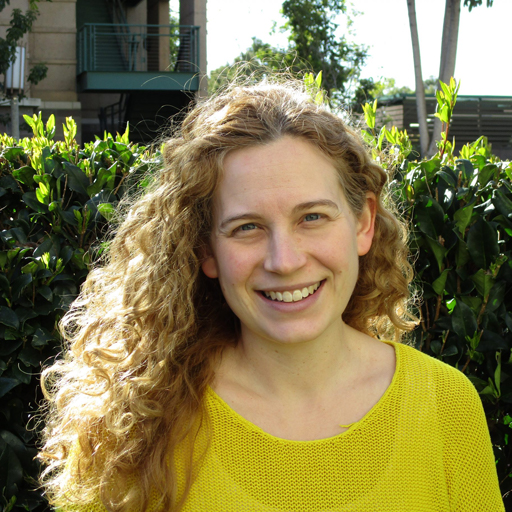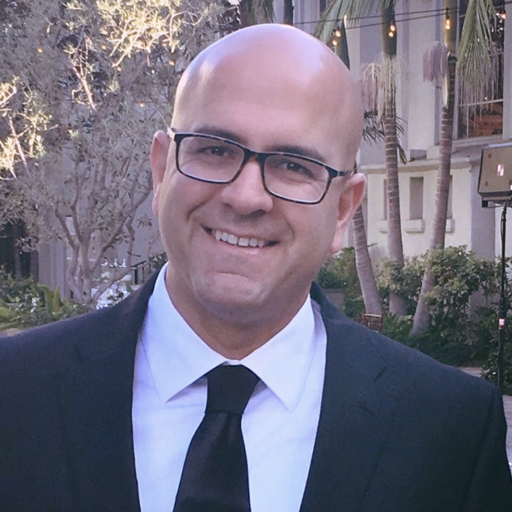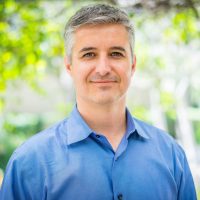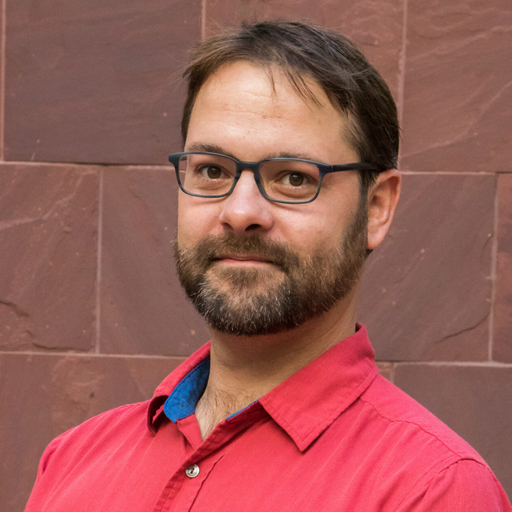The Irvine Summer Institute in Neuroscience Program
Snapshot of 2022 Research Projects
Below are descriptions of potential projects (listed in no particular order) in which participants in the Irvine Interdisciplinary Internship in Neuroscience program will have the opportunity to work.

Project 1: Dr. Autumn Ivy
Aerobic exercise in rodents and humans has profound impacts on learning and memory functions throughout the lifespan. Our lab uses rodent models to determine the effects of early life exercise on the development and function of brain regions responsible for long-term memory, including hippocampus. We apply the latest techniques in epigenetic neurobiology to understand how exercise changes the way brain cells express their genes, and ultimately alters their function. The ongoing projects this summer include: determining the impact of early exercise on preventing age-related cognitive dysfunction, and exercise interventions in the setting of early life adversity and epilepsy. The student will be exposed to a number of experimental techniques including RNA and DNA isolations, next-generation sequencing from translating mRNA (RNA-seq) and nuclear chromatin (CUT&Tag-seq), RT-qPCR and genotyping, immunohistochemistry, animal behavior (including tracking and scoring), and large dataset analyses using R.
Project 2: Dr. Robert Hunt
Brain injury is associated with increased risk for a variety of physical, cognitive and emotional disorders like epilepsy, memory problems, depression or post-traumatic stress. We are working to understand how brain injury changes the way neurons communicate with each other and to design new technologies for precise manipulation or repair of the brain. In other projects, we aim to understand how the nervous system is changed by childhood disorders of brain development. Students will gain experience in 1) modern immunohistochemistry, viral tracing and whole-brain clearing to identify brain-wide circuit changes after brain injury, 2), calcium imaging or electrophysiology in combination with behavior testing and/or 3) the use of human stem cells to model genetic disorders of brain development.
Project 3: Dr. Michael Yassa
Project 1: Obstructive sleep apnea (OSA) is associated with damage to the hippocampus which is thought to underlie OSA-related cognitive impairment. The hippocampus is implicated in pattern separation—the process of storing highly similar experiences as non-overlapping memory representations. Mnemonic discrimination (a behavioral correlate of pattern separation) is a sensitive marker of hippocampal change in age-related cognitive decline and Alzheimer’s disease (AD). Recent work has demonstrated that overnight sleep supports mnemonic discrimination in young adults. Less is known about the impact of sleep, or sleep disorders such as OSA, on mnemonic discrimination in older adults. While OSA has been shown to impact sleep-dependent processing of spatial, motor, and verbal memory, it is unclear whether OSA impacts the consolidation of emotional memories which typically exhibit a sleep benefit. Our preliminary data indicate that OSA promotes overnight retention of highly detailed negative experiences. However, heightened physiological arousal during encoding has also been linked to preferential consolidation of negative memories during subsequent sleep. This student-led project would examine the role of physiological arousal, measured by heart rate deceleration (HRD), during encoding in sleep-dependent consolidation of emotional memories in older adults with OSA. Working closely with a graduate student mentor, the summer student would be able to learn how to conduct sleep studies in the sleep lab, gain skills in measuring and analyzing physiological data including HRD, and test key hypotheses regarding the role of physiological arousal in the retention of negative/aversive memories.
Project 2: Early life experience can have long-term effects on brain circuit maturation and development. Our group has pioneered an approach to measuring the unpredictability of early life experience and has identified this type of early life experience as pre-disposing for adolescent and adult psychopathology. We have shown that unpredictable and chaotic early environments can influence communication among brain nodes that are critical for appropriate development of circuits involved in emotional processing, decision making, and processing reward information. Our most recent work has implicated the paraventricular nucleus of the thalamus (PVT) as a key brain node in these circuits and we have developed for the first time in humans an approach to delineating the functional connectivity of the PVT on functional MRI scans. We are now interested in understanding how PVT functional connectivity in children and adolescents may be related to anxiety outcomes. Working closely with a graduate student mentor, the summer student would be able to learn how to analyze functional neuroimaging data using specialized software, gain familiarity with neuroanatomy, and test key hypotheses regarding the role of the PVT in anxiety outcomes. In addition to the independent research project, the student will also be integrated in “PVT pod” a group of students working closely together on interrelated projects focused on the PVT, explore new techniques and approaches, and present their progress in various group meetings.
Project 4: Dr. Susanne Jaeggi
We are in the process of collecting a large dataset of individuals (~25,000) who are completing a working memory intervention remotely using their own devices (see here for a description: https://www.scientia.global/dr-susanne-m-jaeggi-dr-anja-pahor-and-dr-aaron-r-seitz-moving-beyond-one-size-fits-all-brain-training-solutions/). There are many questions that can be addressed with this dataset, such as 1) whether individuals with certain personality characteristics or baseline abilities are more likely to complete the entire intervention, b) whether the distribution of training sessions predicts learning/consolidation, c) whether there are age differences in terms of learning outcome, etc. Ideally, the student will come up with their own question(s) that they can work on over the summer in collaboration with Dom and/or Yi (and myself). Students will get an introduction into the relevant literature on working memory, learning, and brain training, learn how to ask their question using theory, learn how to pre-process and clean data using psychopy, and test their hypotheses and analyze their data using R or JASP.

Project 5: Dr. Gyorgy Lur
Exposure to adversity early in development has severe cognitive consequences that often persist into adulthood. A particularly vulnerable period is adolescence. During this time, cortical regions responsible for functions like decision making and working memory go through a critical maturation phase. Our data suggests that adolescent exposure to stress disrupts learning and working memory performance in adult mice. The current literature and our earlier work suggests that this effect is due to stress-induced impairment of neuronal connectivity between key cortical regions. However, the specific neuronal circuits affected by adolescent stress and the mechanisms driving the loss of connectivity remain unknown. Our goal over the summer will be to measure the behavioral effects of manipulating specific neuronal circuits and determine which connection(s) may be impacted by stress. Students will gain experience in behavioral training and testing in mice, histology and anatomical techniques, data analysis and programming as well as reading the relevant literature.

Project 6: Dr. Elizabeth Chrastil
1. Humans show large individual differences in their navigation ability, but the source of that variability is not yet understood. Furthermore, we don't even know whether navigation is a unitary construct or whether there are several navigation abilities. We are currently running a large-scale project involving 250+ participants across two sites with 10+ hours of behavioral testing per person to better understand the nature of these abilities. Students will examine one portion of this project, such as the relationship between different path integration (tracking movement without landmarks) abilities or the relationship between basic learning and memory processes and navigation abilities. Students will help collect data, analyze their data, perform a lit review, and prepare their poster. There is also an fMRI imaging component, and student will have the opportunity to be involved in that processes as well.
2. Spatial navigation has been associated with declines in aging and with early detection of Alzheimer's disease. In this project we are looking at the earliest stages of aging, midlife, and testing whether there are early declines in navigation ability at this stage, and whether they differ for men and for women. Students will help collect data for a pilot study, learn how to analyze behavioral data, be involved in analyzing fMRI imaging data, conduct a literature review, and prepare their poster.

Project 7: Kate Kuhlman
Adolescence is a sensitive phase of human development in which risk for depression rises dramatically, and the origins of lifelong health disparities first emerge. Sleep is a transdiagnostic health behavior that can promote resilience or risk during adolescents. We are currently running an intensive, longitudinal study in which adolescents who sleep 5-7 hours per night during weeknight provide daily saliva samples and subjective ratings of their affect for 3 consecutive weeks while wearing an actigraph that monitors their sleep duration, consistency, and efficiency. After 1 week in the study, adolescents will be randomized into a sleep extension condition where they increase their time in bed by 90 minutes each night while the other adolescents will continue to sleep normally. The goal of the study is to understand how sleep duration affects well-established measures of affective well-being and systemic inflammation. The results of this study will aid in our understanding of whether policy or individual interventions targeting the sleep epidemic among adolescents has the potential to mitigate development of health disparities.
Project 8: Dr. Steve Mahler
Project 1: Ultrasonic vocalizations and other behaviors elicited by psychedelic drugs.
Rats communicate using ultrasonic vocalizations that are inaudible to humans, but which can be heard by other rats. Our lab is interested in using computational tools and detailed analyses of rat behaviors to determine whether these vocalizations can also be used by neuroscientists to eavesdrop on rats to determine how they are feeling--i.e. as a rat "self-report" of their emotional states. Kate Lawson is a PhD student who has been examining these vocalizations when rats are given drugs of abuse like amphetamine, heroin, and ketamine. A summer student working on this project will examine vocalizations elicited by psychedelic drugs like DOI and psilocybin (the active ingredient of "magic mushrooms"). Since these drugs are increasingly being tested for their potential as antidepressants or for treatment of other psychiatric disorders, we need better rodent models for examining their behavioral effects and effects on the brain. Students will gain experience in 1) behavioral testing of rats using established models and methods, 2) histology, immunohistochemistry, and microscopy techniques for analyzing reward and memory circuit changes, and 3) in-depth review of prior literature, including discussion of the strengths and weaknesses of current animal models of drug use and abuse.
Project 2: Microglia involvement in long-term effects of adolescent THC.
Adolescent cannabis use is associated with increased psychiatric risk of disorders like drug addiction and schizophrenia, leading to deficits in learning and memory, yet it is still unclear whether cannabis use causes psychiatric risk, or instead results from it. Taking drugs like THC (the main drug in cannabis) during adolescent brain development persistently disrupts brain reward and memory circuits. We have begun unraveling the brain mechanisms of these effects by examining and manipulating the brain to determine how adolescent THC alters its functions. Specifically, we are currently examining how microglia interact with neurons and other brain cells to shape brain function during development, and how THC can disrupt this process. Students will gain experience in 1) behavioral testing of rats using established models and methods, 2) histology, immunohistochemistry, and microscopy techniques for analyzing reward and memory circuit changes, and 3) in-depth review of prior literature, including discussion of the strengths and weaknesses of current animal models of cannabis use.

Project 9: Dr. Shahrdad Lotfipour
The use of nicotine and tobacco products is a major public health concern, given a recent exponential rise in the rate of electronic cigarette use among teens. Since adolescent nicotine exposure can enhance drug consumption later in life, it is especially important to study the molecular mechanisms mediating adolescent nicotine use. Large-scale human candidate gene studies reveal that a common genetic variant in the alpha6 nicotinic acetylcholine receptor subunit (nAChR) (encoded by the Chrna6C123G gene, rs2304297) plays a role in adolescent nicotine/tobacco use. The corresponding alpha6 nAChR protein is present in dopamine reward neurons in the brain, suggesting that modifications in its quantity and/or function may influence nicotine effects on addiction-related neurocircuitry. To test this hypothesis, my laboratory has engineered a genetically humanized Chrna6C123G mutant rat line. The humanized line replicates the genetic variation in humans and will be used to determine how variation in Chrna6C123G affects adolescent nicotine use. Our recent data using this novel rat line illustrates that animals that carry the higher risk version of the Chrna6C123G gene show enhanced nicotine seeking, while animals with the lower risk version of the gene show reduced nicotine seeking. These effects are sex dependent with males more impacted than females. The current project will study whether Chrna6C123G variation influences baseline and/or nicotine-induced dopamine levels in brain reward regions with similar sex-dependent effects. Understanding the role of Chrna6C123G variations in adolescent nicotine addiction is increasingly important as teen vaping has escalated dramatically, and may lead to improved prevention and intervention strategies.

Project 10: Dr. Katherine Thompson-Peer
My lab studies how neurons regenerate after injury. Neurons have 2 parts, the receptive antennae called the dendrite arbor, and the long cable-like axon that sends action potentials down to distant cells. My lab focuses specifically on how neurons regenerate dendrites after injury, in part because this question is dramatically understudied (about 18 papers on PubMed on "dendrite regeneration" versus 2600+ papers on "axon regeneration"). Dendrites are injured in variety of ways in people (stroke, traumatic brain injury), and are especially sensitive to neurodegenerative diseases (Alzheimers, Huntington's disease, spinocerebellar ataxias). My lab uses the fruit fly Drosophila to image in vivo in a whole intact alive animals how neurons regenerate dendrites. My graduate student has discovered that delivering a small injury to a neuron in the late stages of neurodegenerative disease can induce a neuro-protective response. However, we need to do a lot of work to fully characterize this surprising finding that a small injury is neuroprotective (and occasionally stimulates neuronal regeneration). A summer undergraduate student will work alongside my graduate student to perform essential experiments to determine under what conditions these neurons degenerate, and when they can be protected. Specifically, while my student has studied the effects of overexpressing pathogenic mutant alleles of spinocerebellar ataxia genes, and also how wild-type neurons respond, she has yet to determine the effects of overexpressing non-pathogenic alleles of spinocerebellar ataxia genes. A student working on this project will learn Drosophila genetics, sample preparation for imaging, confocal imaging, and image analysis.

Project 11: Dr. Lulu Chen
All students will have the opportunity to be exposed to the multidisciplinary approach utilized in our lab, which includes 1- Mouse genetics, 2- Molecular Cloning, 3- stereotaxic surgeries, 4-electrophysiology, 5- mouse behavior, 6- immunohistochemistry and imaging. In addition, all students will receive training on research design, experimental controls, journal club, data analysis, lab meetings, and lab outings. Project 1: Brain Oscillation and Sleep Analysis on in vivo EEG recordings in the ASD mouse model Project 2: Early life adversity in habit formation

Project 12: Dr. Marcelo Wood
Gene transcription is a highly regulated molecular process that is crucial for long-term memory. Studies have shown that blocking histone deacetylase 3 (HDAC3) in mice enhances memory, implicating HDAC3 as a key negative regulator of gene transcription and memory formation. Oftentimes, the activity of transcriptional regulators, like HDAC3, are further regulated by phosphorylation. There is data to suggest that phosphorylation activates HDAC3, increasing HDAC3’s ability to repress gene transcription. However, it is unclear how phosphorylation of HDAC3 directly determines HDAC3’s ability to regulate long-term memory. We have begun investigating the molecular mechanisms underlying how HDAC3 activity is regulated by phosphorylation, and if dysfunction in this mechanism contributes to memory impairments in the aging brain. For this project, students will participate in survival surgical procedures and behaviorally testing mice, as well as exposure to techniques to evaluate gene expression (RT-qPCR) and protein analysis (Western blotting and immunofluorescence).

Project 13: Dr. Momoko Watanabe

Project 14: Dr. Christie Fowler
Why is nicotine in e-cigarettes addictive and how can we develop a better medicine to treat people with nicotine dependence? These are two main questions that the Fowler lab focuses on in their research. For this program, the summer student will work under the direct mentorship of Malia Bautista, a graduate student in the lab. Malia's work focuses on the role of a protein, Lynx2, in regulating behaviors associated with nicotine addiction. Lynx2 is a negative allosteric modulator of nicotinic acetylcholine receptors, and as such, this protein controls how efficiently nicotine is able to activate neurons in the brain. For this project, the student will examine the implications of removing Lynx2 from the brain on cellular activation following nicotine exposure. The student will learn how to section brain tissue into thin slices, immunohistochemical protocols to stain different proteins in the brain, techniques to mount brain tissue onto microscope slides, and microscopy techniques to visualize and quantify the activated brain cells. Additional opportunities for the student may include handling mice and performing behavioral assessments of anxiety, drug seeking, and learning/memory. To learn more about the lab, visit the website: https://faculty.sites.uci.edu/fowlerlab/

Project 15: Dr. Kevin Beier
Project 1: Brain circuits involved in early Alzheimer's disease risk. We do not know where or when Alzheimer's disease originates. We are mapping how brain circuits degenerate in AD.
Project 2: Only a fraction of individuals who take drugs of abuse develop a substance use disorder. The factors that contribute to individual behavioral vulnerability to substance misuse are not known.
Project 3: Even a single exposure to drugs of abuse creates long-lasting changes in brain circuits. We have identified several such changes and are pursuing their roles in the development of drug addiction, and the roles that these regions play in behavioral vulnerability.
For any of these projects, students will be involved with brain clearing, imaging, mouse behavioral testing, immunohistochemistry, and data analysis.

Project 16: Dr. Julian Thayer
There will several feasible and fruitful studies in our lab this summer that the student can engage in, and importantly, extract novel and relevant findings. For example, all studies will examine baseline cardiovascular measures, in particular heart rate variability which is structurally and functionally linked with executive brain regions, in relation to several important psychological phenomena.

Project 17: Dr. Tallie Z. Baram
a. Sex-differences and the role of estrogen in the effects of acute traumatic stress on memory chronic stress is known to impair memory, but acute stress has been cosidered benign. Thinking of the profound impact of mass shootings, terrorist attacks and natural disasters, we posited that when acute physical, psychological and social stress all happen together, their combined effect on memory may be strong. In our animal model, such multiple concurrent acute stressors (MAS), lasting only 1-2 hours lead to impaired spatial memory. This happens in males and in females during high estrogen phases of thei estrous cycle. Low estrogen is protective- and the project is teasing out how.

Project 18: Dr. Munjal Acharya
"Stem cell-derived exosome therapy for radiation-induced brain injury. " Cranial radiation therapy (CRT) in combination with chemotherapy (temozolomide, TMZ) is a standard of care for the treatment of primary and metastatic brain cancers. However, CRT-TMZ often leads to unintended, long-term cognitive dysfunction, particularly, in childhood brain cancer survivors. Currently, there is no approved medical recourse to reverse this long-term, debilitating clinical outcome. We are testing a human neural stem cell (hNSC)-based regenerative therapeutic - exosomes or extracellular vesicles (EV) - that contains beneficial cargo to alleviate critical hallmarks of CRT-TMZ-induced brain injury including neuroinflammation and synaptic loss. The student will observe the ongoing cognitive testing and will also be given the training to conduct dual-immunofluorescence staining, laser scanning confocal microscopy and 3D algorithm-based volumetric quantification of neuroinflammation and synaptic markers in fixed mice brains to determine the neuroprotective effects of stem cell-derived EVs.

Project 19: Dr. Javier Diaz Alonso
AMPA receptors mediate fast excitatory synaptic transmission in the brain. The accumulation of AMPA receptors at synapses (connexions between neurons) is a common mechanism of different forms of synaptic plasticity, including long-term potentiation (LTP). LTP is involved in several forms of learning and memory formation. In our lab, we are interested in understanding the molecular mechanisms controlling AMPA receptor trafficking. Specifically, we are studying how AMPA receptors interact with other synaptic proteins and how that affects AMPA trafficking, LTP, and memory processes. In this project, the student will use 1) cell culture and biochemistry to test interactions at the molecular level, and 2) overexpression and/or deletion of AMPA receptor interacting proteins with viral infections, analyzing the impact on AMPA localization using histology and microscopy. The student will also participate in lab meetings, as well as in regular meetings with the PI to discuss literature and data.

Project 20: Dr. Lisa Flanagan
Neural stem and progenitor cells (NSPCs) differentiate during development to form the brain and spinal cord and can be used to model and potentially treat neurological conditions such as stroke. Undifferentiated NSPCs encounter extracellular signals that bind plasma membrane proteins and impact differentiation. Membrane proteins are regulated by sugars attached by N-linked glycosylation, making it possible that glycosylation plays a critical role in cell differentiation. Our lab found that a specific glycosylation pathway controls NSPC differentiation into neurons and astrocytes. Students will learn to culture NSPCs, manipulate glycosylation pathways in the cells, and differentiate them into neurons, astrocytes, and oligodendrocytes. In addition to standard biological assays, we utilize bioengineering platforms to assess cell phenotype and students will use these to apply diverse methods to biological problems. Students will gain an understanding of neural stem cell function, basics of early neural development, and neurological conditions that could benefit from regenerative medicine approaches.




